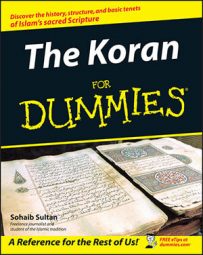The day Prophet Muhammad died, the Muslim community faced a state of chaos; for the first time, Muslims had questions that couldn't be answered directly by God through the Prophet.
During this critical time, Abu Bakr (a close companion of Prophet Muhammad and first Caliph after the Prophet's death) stood in front of the Muslims and emotionally recited a passage of the Koran that suddenly came to life: "Muhammad is no more than a messenger. Many were the messengers that passed away before Him. If he died or was slain, will you then turn back on your heels?" (3:144). Then, Abu Bakr said, relating the meaning of this passage to his people, "If you worshiped Muhammad, then know that Muhammad has died. But, if you worship God, know that God is living and He lives forever."
With these beautiful words, Abu Bakr began the science of Tafsir, a science that continues to this day.
Tafsir from the first generation and successive generations was largely, if not strictly, based on Tafsir bil-riwaya, or Tafsir transmitted through a chain of narration to Prophet Muhammad and the teachings of his companions. This makes these Tafaseer the most authentic in the eyes of the majority of Muslims.
Among the companions
In order to understand the Scripture, Muslims referred to many of the famous companions of Prophet Muhammad, such as Abu Bakr, Umar, Uthman, and Ali. The closest companions basically lived and breathed with the Prophet, and were therefore most intimately aware of the Koran's meaning.
The companion Ibn Abbas spent much of his childhood under the teaching of Prophet Muhammad. Muhammad praised Ibn Abbas's wisdom, and the other companions deeply respected him, even though he was considerably younger than most of them.
Other young companions who grew up in Prophet Muhammad's presence were Al-Abadillah, Ibn Zubair, Abdullah ibn Umar, and Abdullah ibn Al-As. These companions were among the greatest teachers of the Koran; references to their traditions are highly revered.
The Prophet's wives also made outstanding contributions to Tafsir because they experienced his everyday life and most of his private actions and concerns. These women, known as the Mothers of the Believers, related many of Muhammad's practices.
Interestingly, while the companions experienced the revelation through the Prophet at the same time, their Tafsir often differed. For example:
- Ibn Abbas: Known to be very accommodating and flexible in his opinions on sacred law. He is recognized today for his progressive understanding of the Koran, especially on matters dealing with the rights of women.
- Abdullah ibn Umar: His personality was more conservative and strict. Umar complained once to Ibn Abbas that his opinions (or Fatwas) were too flexible and lenient. Umar was known for his strict interpretation of the Koran and sacred law.
Despite their differences, the companions had great respect for each other and always acted in mutual consultation. They lived the tradition that says, "Difference of opinion among the Ummah is a blessing from God." But, these differences of opinions do not exist on fundamental teachings, but rather on minor issues.
In successive generations
The generation that followed Muhammad's companions (Sahabah) is known as Tabi'un. These interpreters came mainly from three locations:
- Mecca: The group from Mecca was considered most knowledgeable and trusted, because they were students of Ibn Abbas (see the preceding section). From among them, Mujahid was considered the wisest interpreter. People visited from all across Islamic civilization to learn from him. His was also the first written book of Tafsir collected.
- Medina: The students from Medina also learned from some of the greatest companions. Ubay bin Ka'b's students — Zaid bin Aslam and Ka'b Al-Quradi — count among the great interpreters from this school.
- Iraq: The group of interpreters from Iraq benefited greatly from the companion Ibn Mas'ud, who moved to Iraq. Basra and Kufa were the two great cities of knowledge. The most famous students from this school were Al-Hasan al-Basri and Ibrahim al-Nakhai'.

